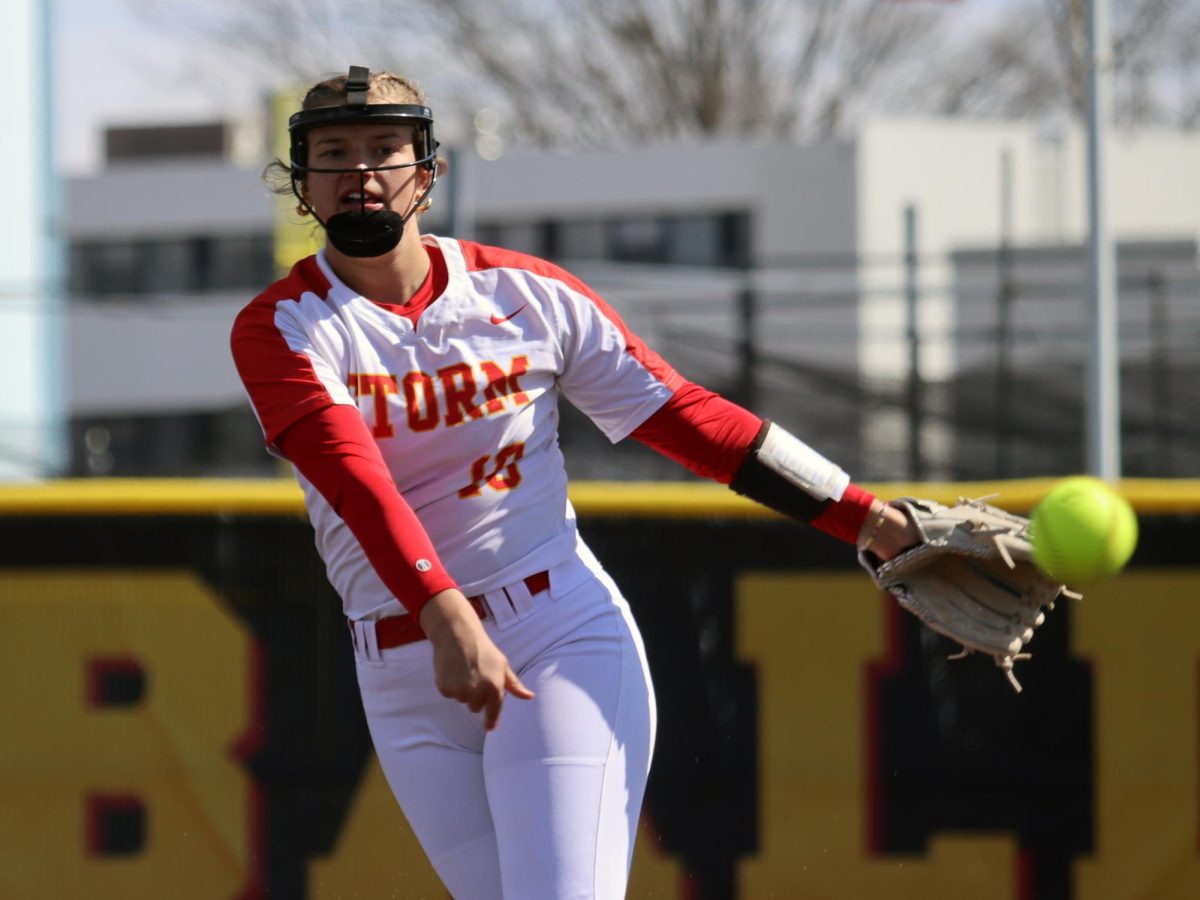Woo-ee-oo, he looks just like Buddy Holly
September 11, 2003
If rock’n’roll really is a communicable disease, as Hotpockets Duncan claimed, then The Des Moines Playhouse production of “Buddy: The Buddy Holly Story” is a great way to spread it.
The musical, written by Alan Janes and directed by John Viars, follows Holly from his start as a country singer in Texas to his climb up the charts and his shocking death.
But, to call it a musical is entirely unfair. This production is much more like an energetic ’50s rock show with acting in between the sets. The cast managed to have the Sunday matinee audience-which consisted mostly of members from older generations-dancing in the aisles.
Billy McGuigan is fantastically dead-on as the charismatic Holly. McGuigan has voice, guitar and even has the wide stance foot tap down. For Holly fans, the imitation will be striking and somewhat haunting. Even his glasses and sweaters are on target, thanks to costume designer Angela Lampe.
Timothy Tate steals the few scenes he is in as a Goodtime Apollo Singer. His only meaningful appearances are as a skeptical performer when Holly and the Crickets perform at the Apollo Theater in Harlem. In the Apollo scene, the cast is able to transform the Iowa audience into a 1950s Harlem crowd.
While the music scenes are incredible, the ensemble cast falters in the scenes in between. It is unclear, however, whether this is due to the script or the acting.
Hotpockets Duncan, played by Thatcher Williams, often sounds like he is reading straight from the script– and not very well at that. Bill Coil seems anxious and breathless as another Goodtime Apollo Singer. At the same time, the fourth Cricket (Mike Tyler) appears randomly and disappears even more mysteriously throughout the play, with no explanation from the writing. Dialogue between Norman Petty (Richard Gibbs) and Vi Petty (Melissa Kellar) is disconnected and unimaginative.
However, many interesting tidbits about Holly are presented. For example, he asked his wife, Maria Elena (Shoshana Salowitz), to marry him on their first date.
“Buddy” lacks the contrived, flashy, often uninspiring, ensemble numbers of other popular musicals. The cast actually has the musical talent and confidence to play and sing Holly’s music-no air guitar or lip-synching here.
Through transitions and studio scenes, this production affords many opportunities to hear Holly’s songs as well as the back-story to many of them. “Peggy Sue,” it turns out, was originally going to be “Cindy Lou.” The title was changed so the drummer, Joe B. Mauldin (Ross Vander Werf), could get a piece.
The play rises to the fateful night at the Surf Ballroom in Clear Lake, Iowa-Holly’s last performance. In an incredibly energetic and realistic recreation of this last concert, J.P. Richardson “The Big Bopper” (Joe Tish) and Richie Valens (Jeremy Alvarez) join Holly onstage. If McGuigan’s performance as Holly is convincing, then Alvarez singing as Valens is absolutely phenomenal. However, Alvarez lacks the stage presence to accompany his voice, and his appearances are accordingly short.
Through poignant staging and dramatic lighting, Viars highlights, but does not dwell on, Holly’s tragic demise. Like “Godspell” and “Titanic,” the audience knows what’s coming, but can’t help but give in to that collective case of goose bumps when Holly’s guitar and three microphones stand on an empty stage.
In a time when many people think Buddy Holly is only someone that Rivers Cuomo looks like, this play is a real eye-opener to the true talent of this Rock’N’Roll Hall of Famer.
If Feb. 3, 1959 was the day the music died, then it can live again Sept. 5-28 at the Playhouse. Tickets are only $15 for students-cheaper than a case of long necks and far more stimulating.











